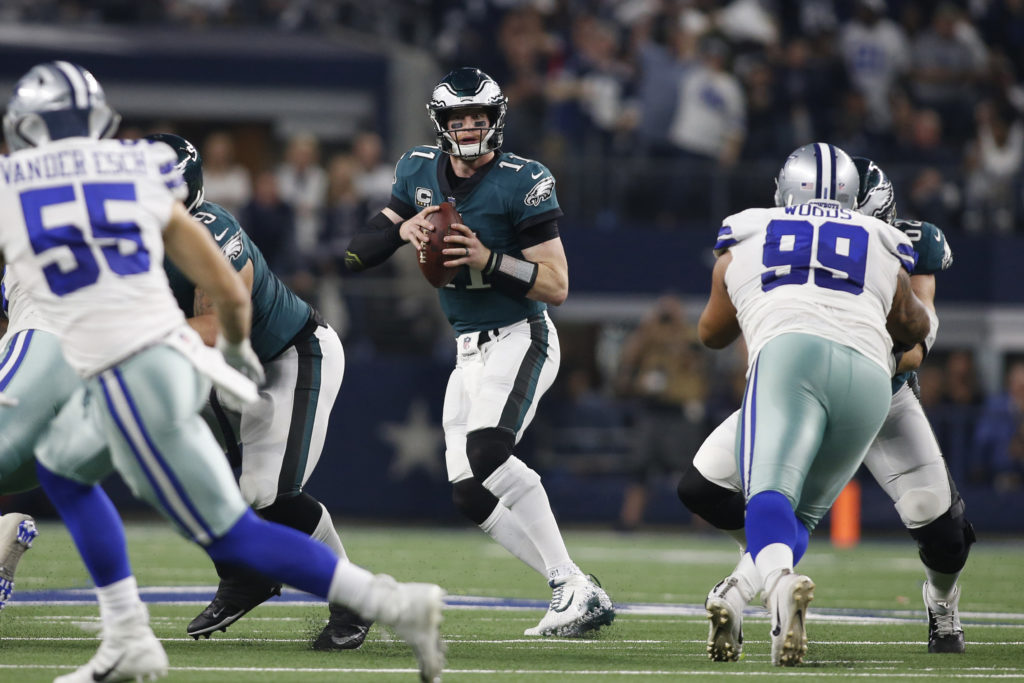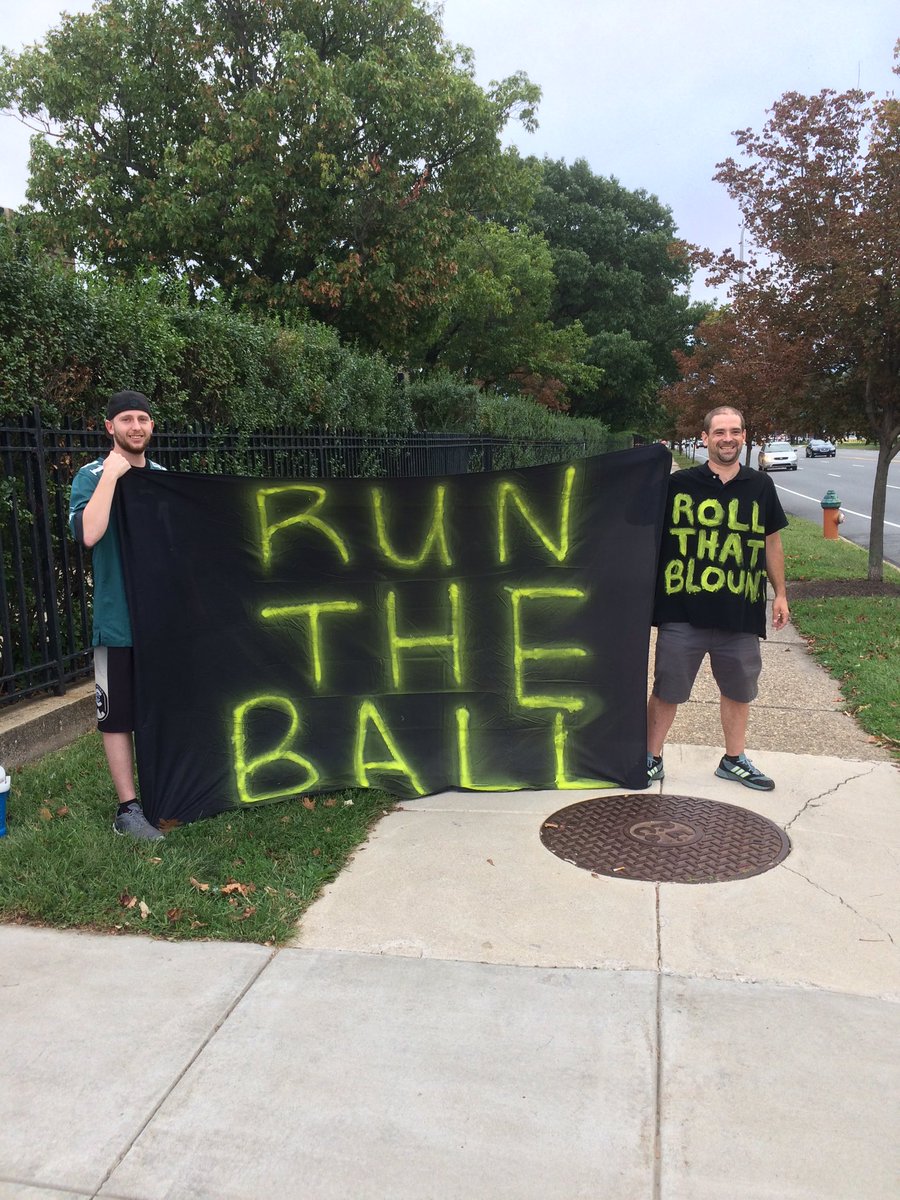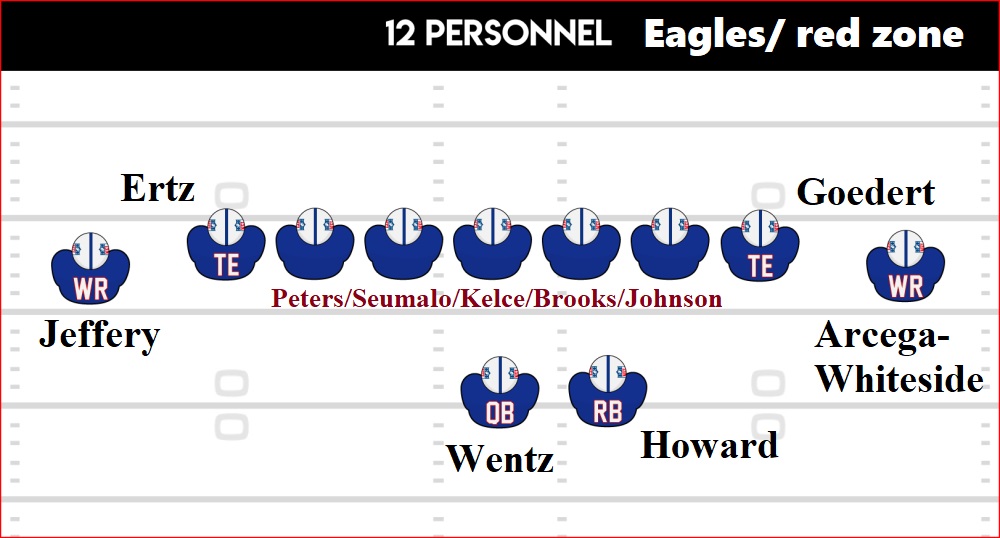Ad Disclosure
Five Things the Eagles Need to Fix to Return to the Super Bowl

Let’s get it back to the Eagles.
Training camp starts this week, which means… not a whole lot really, but its a hell of a lot better than voluntary workouts and mandatory minicamp. It means we’re getting closer to the first preseason game, which will be played on August 8th, at home, against the Titans. That’s just 17 days away.
I figure the theme surrounding this Eagles’ season is “Super Bowl or bust.” Fair? I think so. We’re talking about a team that has what it takes to get back to the big game, and if this truly is “the new norm,” as Doug Pederson said after the 2017 victory parade, then we should be expecting nothing less than an NFC East title and Super Bowl 54 appearance.
Here are five things I think the Eagles need to fix to get back to their marauding and highly-efficient 2017 form, a list that does not include “staying healthy.” That’s obvious. No duh they need to stay healthy, and if they can’t, then it might be another slog of a season here in Philly.
Real points here:
1. Downfield passing and explosive plays
The Birds took a step back in the big plays department last season, as Carson Wentz completed just 37 passes of 20 yards or more and only five passes that went for more than 40 yards. Those numbers were down from 40 and nine in 2017, respectively.
If it feels like that first batch of numbers is low, it’s because, well, it is. It really is. For context, Pat Mahomes led the NFL with 75 passes of 20+ yards and 15 passes of 40+ yards. Closer to the middle, you had a guy like Matt Ryan, who threw 56 passes of 20+ yards and nine passes of 40+ yards.
Carson just wasn’t getting the football down the field, partly because the Eagles lost Mike Wallace in week two and simply didn’t have a deep threat on the roster, but also because he just wasn’t pushing the ball down the field with the frequency or accuracy that he was in years prior.
I put his 2017 and 2018 charts side by side so you can take a look for yourself. These are via the NFL’s NextGen Stats page, and portions of the field in green and yellow are above and at the league average, while red is below league average (after the jump):
Carson was excellent throwing deep to his left on the few occasions he did this season, but he really fell off in the other two deep areas, putting up passer ratings of 20.8 and 26.3, down from 67.0 and 79.9 in 2018. That’s why you need to look at his 2018 numbers with nuance, because while he did improve his completion percentage by 9.4 points, he threw a lot shorter on average last year, frequently hitting Zach Ertz, for example, on shorter routes.
To illustrate it another way, we can use the “explosive plays” metric, which has become more popular in recent years.
At Sharp Football Stats, an explosive running play is defined as a play that goes for 10 or more yards, while an explosive passing play goes for 15 or more.
In 2018, the Eagles put up these explosive play numbers:
- 32 explosive runs (24th in NFL)
- 44 explosive passes (16th in NFL)
- 9% combined overall explosive play rate (25th in NFL)
They just weren’t ripping off huge chunks of yards on a consistent basis, and while they did successfully chew up the clock and control the game with some long and sustained drives, being able to stretch the field and make big plays was something they really did not do enough of in 2018.
2. Give and take
Turnovers were a killer last year, and one of the categories where the Eagles fell apart most significantly from the Super Bowl campaign.
Case in point, here’s how the team did in 2017:
- 19 interceptions (4th best)
- 12 fumble recoveries (4th best)
- 31 takeaways (4th best)
- 9 interceptions thrown (6th fewest)
- 11 fumbles lost (8th most)
- 20 giveaways (tied for 11th best)
- +11 turnover margin (4th)
Excellent stuff across the board. The Eagles had a fumbling problem on offense, but Carson Wentz and Nick Foles threw few interceptions while the Birds defense finished top-five with 31 total takeaways. All of that combined resulted in the team finishing with the NFL’s fourth-best turnover margin.
Here are the 2018 numbers:
- 10 interceptions (25th)
- 7 fumble recoveries (19th)
- 17 takeaways (22nd)
- 11 interceptions thrown (10th fewest)
- 12 fumbles lost (3rd most)
- 23 giveaways (12th most)
- -6 turnover margin (25th)
Everything fell off, and rather significantly, too, resulting in a -17 overall turnover margin swing from 2017 to 2018. That’s a massive drop, from 4th in the NFL all the way down to 25th.
The one positive here is that interceptions were a top-10 number in both seasons, so it wasn’t like the Eagles were getting picked off left and right. Wentz’s problems last year were in the fumbling department, and if he’s healthy and more mobile, then he’ll probably do a better job of protecting the football and moving around the pocket than he did last season.
3. Running the football
Sometimes I think we forget how efficient the Birds were when running the ball in 2017.
They put up these regular season numbers:
- 473 attempts (6th most)
- 4.5 yards per attempt (3rd best)
- 132 yards per game (3rd)
They only scored nine touchdowns on the ground that year, and fumbled a league-worst 11 times, but the important thing is that they remained committed to the run and didn’t fall too far into the that lopsided pass/run skew that we had seen at times from Doug Pederson, which was a byproduct of his time working with Andy Reid.
Last year, the Eagles did this in the run game:
- 398 attempts (20th)
- 3.9 yards per attempt (30th)
- 98.1 yards per game (28th)
It was a struggle across the board, and because they didn’t run well, they didn’t pass as well either, being unable to use the same play-action and RPO looks with the efficiency you saw in the year prior.
Jordan Howard will help with this, certainly as a guy who has run for 1,000 yards twice in his three-year NFL career. The Eagles will still pass the ball about 55-60% of the time in a typical game, but having a legitimate first and second down back as opposed to the rotating cast of Josh Adams, Wendell Smallwood, and others, should really help opens things back up.
In simpler terms, the Eagles must listen to these guys:
4. Get off the field on 3rd and 4th down
Believe it or not, there was not a huge statistical drop off in the first category.
In 2017, the Eagles finished 3rd in the NFL as they held opposing teams to a 33.6 third down conversation percentage. Last year, that number was 36.2%, which was 8th overall in the league.
So the decline there was not as bad as I thought it would be when I looked into the numbers. They went from ‘elite’ to ‘very good,’ in third down defense, which you can certainly live with.
The problem was fourth down, where this happened:
- 2017: opponents converted 4 of 18 fourth down attempts (22.2%, tied for #1 in the NFL)
- 2018: opponents converted 11 of 19 fourth down attempts (57.9%, 19th in the NFL)
That really just killed the Eagles last year. It cost them the Tennessee game and bit them in the butt on too many other occasions.
That manifested itself in time of possession as well, where the Eagles actually finished 4th overall in 2018, but #1 overall in 2017. Similar to the third down number, the margins there aren’t very wide, but think about what would have happened if the Birds were able to get off the field on fourth down closer to a 30-35% opponent rate instead of 57.9%. They again likely would have been #1 in the league at controlling time of possession.
These plays were just total killers:
What in the world is Corey Graham defending? pic.twitter.com/ZPfhpVJzc0
— Joe Giglio (@JoeGiglioSports) September 30, 2018
5. Bully defenses in the red zone
I wrote an entire sidebar on this topic, but it’s worth repeating some of those points in this article because it’s uber-important that the Birds improve here.
In 2017, Philly finished 2nd in the NFL with a 64.06 touchdown percentage in the red zone. That number dropped to 59.02 last year, which pulled the Birds all the way down to 17th overall.
That happened despite the team putting up 365 yards per game, which was the same exact number they put up in 2017. That season, those 365 yards became 28.6 points per game, while this past year the number dropped to 22.9. They were moving the ball between the twenties, they just weren’t putting it into the end zone with the required frequency.
Carson Wentz has a lot to work with this year in terms of red zone options, some he had last year and some he didn’t have. But what I like most about this 12 personnel grouping below is that all four receivers can make contested catches, while the running back is a no-nonsense, downhill guy:
I’m looking forward to seeing something like that on the ten yard line. There’s gonna a mismatch out there somewhere, and it’s up to Wentz to execute, because he’s going to have no lack of options in this department.
Kevin has been writing about Philadelphia sports since 2009. He spent seven years in the CBS 3 sports department and started with the Union during the team's 2010 inaugural season. He went to the academic powerhouses of Boyertown High School and West Virginia University. email - k.kinkead@sportradar.com


